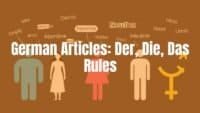Finding your way through German schools can feel like solving a big puzzle, especially if you are new. This guide explains how the system works, the rules, and what makes it special. We go from kindergarten to university and cover each step. You’ll see how Germany values high standards, hands-on learning, and personal growth.
Quick Facts about the German School System
Germany’s schools are praised for quality and access, and they attract many international students every year. The system ranks high in global surveys, showing steady quality. A key feature is the early split into different learning paths. People sometimes debate this, but the idea is to match school routes to each child’s strengths and future plans.
What Makes German Schools Unique?
German schools stand out for a few clear reasons. First, they mix strong academic study with practical experience. You can see this in the very strong vocational education and training (VET) routes. Second, schools focus on building independent thinking from a young age. Third, students are often placed into different tracks early on. While this may seem unusual in countries with one common track, the goal is to guide students to paths that fit their skills, whether that leads to university or skilled trades.
Key Education Statistics in Germany
Numbers show Germany’s focus on education. More than 15% of people aged 25-34 hold a vocational post-secondary qualification as their highest degree. This is higher than the 6% average in OECD countries and shows the strong role of practical training. Germany also offers free or very low-cost university study for locals and many international students. In the 2018 OECD/PISA results, Germany ranked 16th in math and reading and 12th in science among 15-year-olds. These results show that the system works well for many students.
How Is the German School System Structured?
Germany has a federal system. The 16 states (Bundesländer) are mainly in charge of education, though there is coordination at the national level. Core ideas are similar everywhere, but curricula, school types, and holiday dates can differ by state. The Basic Law (Grundgesetz) supports this setup, which lets regions adapt while keeping shared quality standards.
What Are the Main Stages of Education in Germany?
Schooling is set up in five main stages: early childhood education, primary education, secondary education, tertiary education, and continuing education. Each stage builds on the previous one and prepares people for learning, work, and life.
Early childhood education is optional but common. It focuses on social skills and early learning. Primary school starts compulsory education and helps children move from play-based learning to formal lessons. Secondary school offers different paths, leading either to vocational training or higher education. Tertiary education includes universities and academies known for strong academic standards. Continuing education gives adults many options to improve skills throughout life.

Who Supervises Schools in Germany?
The Federal Ministry of Education and Research (Bundesministerium für Bildung und Forschung – BMBF) provides coordination and support. But the states make the main decisions. Each of the 16 states has its own education ministry. These authorities set curricula, teacher qualifications, and how schools are organized. This setup means children get good schooling across Germany, though details differ by state.
What Is Compulsory Education in Germany?
Compulsory education is both a right and a legal duty. Children must attend school for many years. This reflects Germany’s belief in wide access to knowledge and skills.
At What Age Does School Start and End?
School duty starts at age six. After that, children must attend full-time school for at least nine years at a Gymnasium or ten years at other general schools. This usually covers ages 6 to 15 or 16. If a student does not go straight into full-time higher education afterward, part-time schooling continues until age 18. Often this means going to a vocational school (Berufsschule) within the dual system, so learning and training keep going.
Attendance Laws and Exceptions
School attendance laws are strict. Homeschooling is generally not allowed. Children must attend public schools or private schools approved by the state. Exceptions are very rare and usually relate to serious medical issues or disabilities that prevent attendance. Even then, the state arranges alternatives so the child can still receive education. Children with disabilities must also attend school and can go to regular schools with support or to specialist schools suited to their needs.
Early Childhood Education in Germany
Early childhood education is a key part of German schooling, even though it is optional. It offers a caring space where young children build social, emotional, and thinking skills before primary school. It aims to grow independence, curiosity, and a love of learning.
What Is Preschool Education in Germany?
Preschool (early childhood education) serves children from birth to age six. Most children attend, mainly for social growth and early learning. The focus is on the whole child rather than formal academics, preparing them for primary school.
Which Institutions Provide Early Childhood Education?
Both private and public child and youth services provide early childhood education. Most places are private daycare centers, including crèches (Kinderkrippen or Krippe) for under-threes, kindergartens (Kindergärten or Kiga) for ages three to school start, and day-care centers (Kindertageseinrichtungen or Kita), which may include both age groups. Non-public groups like churches, welfare groups, or parent associations often run these services. Local authorities open public centers if private places are not enough. Some states also run “school kindergartens,” preliminary classes, or primary school support classes (Schulkindergärten, Vorklassen, Grundschulförderklassen) for children of compulsory school age who are not yet ready for primary school, including those with learning difficulties or special needs.
Methods and Curriculum for Young Children
Early childhood education aims to build independence and support overall growth. For children under two or three, the focus is on communication and language through social play, finger games, singing, and picture books, with adults serving as language models. Motor skills are built through movement, visits to public spaces, rhythm and music, and active play to help body awareness, confidence, and focus.
For older preschoolers, key areas include language, writing, and communication; personal and social growth; values and religious education; math, science, and technology; arts and media; body, movement, and health; and learning about nature and culture. Learning happens through self-directed activities, creativity, teamwork, and exploring and experimenting. There are no formal tests. Educators observe children, speak with parents, and, if needed, agree on next steps to support a child’s learning.
School Readiness and Entry Assessments
Preschools do not give formal academic tests, but the move to primary school is planned carefully. Educators observe each child’s interest in learning and progress and talk with parents. If a six-year-old is not ready for structured lessons, some states offer a “middle option,” such as a special school, school kindergarten, or preliminary class, often with extra support for disabilities or special needs. This flexible setup helps children start primary school when they are ready.
Primary Education: Grundschule
Grundschule (primary school) is the start of compulsory education. All children learn together in mixed-ability classes. The goal is to teach basic skills and help children move from play-based preschool to structured lessons. This step sets the base for later school choices.
What Is Taught in German Primary Schools?
Grundschulen follow standards set by the Standing Conference of the Ministers of Education and Cultural Affairs (Kultusministerkonferenz). Main subjects are German, Mathematics, and General Studies (often parts of science, history, and geography). Students also study a foreign language, art, handicrafts, music, and physical education. Religion or ethics may be included, depending on the state.
Schools also address themes across subjects, like intercultural learning, sustainability, and values. Parents are encouraged to take part in their child’s learning. Students help plan and reflect on lessons. Teachers adjust content to fit what students already know and what interests them, often using projects and links between subjects.
Grading and Progress Reports in Grundschule
Grading changes over time. First grade focuses on settling in, and many schools do not give formal grades. First graders move to second grade without a number grade. From second grade on, students receive grades on a 1-6 scale: 1 is “very good,” 6 is “very poor.” At the end of the year, each student gets a report (Zeugnis). Based on results, they move to the next grade or repeat to strengthen basics. In most states there is no leaving certificate after primary school, but Baden-Württemberg and Rheinland-Pfalz issue one.
Moving to Secondary School
The move from Grundschule to secondary school is an important step. Near the end of fourth grade (or sixth in Berlin and Brandenburg), teachers, parents, and students discuss the best next school type. The choice depends on the child’s results, teacher advice, and family wishes. The aim is to pick a track that fits the student’s skills and goals, whether academic or vocational. This early split is a key feature of German schooling and helps set a good path from a young age.
Secondary Education in Germany
Secondary schooling in Germany uses a multi-track model. Unlike one-size-fits-all systems, it offers different school types to match varied abilities and goals. After primary school, students enter paths that lead either to university or to vocational training.
Types of Secondary Schools: Hauptschule, Realschule, Gymnasium, Gesamtschule
After grade 4 (or grade 6 in some states), students usually go to one of three traditional school types, and in some states a combined option is available.
- Hauptschule: Covers grades 5-9 (about ages 10-15). It focuses more on practical and vocational learning. Graduates receive the Hauptschulabschluss, which allows entry to vocational training in the dual system and part-time schooling.
- Realschule: Covers grades 5-10 (about ages 10/11-16). It offers a balanced mix of academic and practical subjects. Graduates earn the Realschulabschluss, giving access to vocational training or, with strong results, higher education routes.
- Gymnasium: Academic secondary school leading to university. Students attend from about age 10/11 to 18 (grades 5-12/13). Completion leads to the Abitur (general higher education entrance qualification). The curriculum is demanding, with strong focus on languages, math, and science, and usually a second foreign language.
- Gesamtschule: Offered in some states as an all-in-one school that brings Hauptschule, Realschule, and Gymnasium paths under one roof, usually covering grades 5-10 or 5-12. Students start at age 10/11 and may finish at 16 or 18, depending on the path. Two models exist: cooperative (KGS), which separates paths, and integrated (IGS), which places students by level in core subjects. Leaving qualifications depend on the path followed.

These options reflect Germany’s idea of giving fitting routes so students can prepare for university or skilled work.
Curriculum Differences Between School Types
While all secondary schools share core subjects, content and depth vary. In lower secondary (Sekundarstufe I, grades 5-9/10), all students study German, Math, and a first foreign language. At Gymnasium, a second foreign language is usually required from grades 7-10. Science (biology, chemistry, physics), social studies (history, geography, politics), arts, sport, and religion or ethics are also taught.
In upper secondary (Sekundarstufe II), especially in the Gymnasium’s Oberstufe, students go deeper in three broad areas: languages/literature/arts; social sciences; and math/natural sciences/technology. They must keep subjects from each area until the Abitur. Vocational schools (Berufsschulen) mix general subjects with job-focused courses, such as economics, technology, biotech, health, or trade-specific topics, to build both theory and practice for a profession.
Grading System in Secondary Schools
Secondary schools use a 6-point scale, with 1 as the best and 6 as the worst:
- 1: Very good
- 2: Good
- 3: Satisfactory
- 4: Adequate
- 5: Poor
- 6: Very poor
Students usually need at least a 4 in all subjects to move up. In the Gymnasium qualification phase (final two years), grades convert to points from 15 (excellent) to 0 (fail). These points add up and matter for the final Abitur score used for university entry.
Changing Schools or Tracks in Secondary Education
Students can change school types if their performance improves or goals change. A Realschule student with strong results might move to a Gymnasium to aim for the Abitur. A student finding Gymnasium too demanding might switch to Realschule or Hauptschule. Rules differ by state and usually involve talks with school staff and review of grades. This flexibility means students are not stuck on one path and can adjust as needed.
German Vocational Schools and Dual Education Pathways
Germany puts strong focus on vocational education and training (VET). After lower secondary school, many students enter vocational schools tied to the dual system (duales System). They learn theory at school and practice in a company. Graduates are academically prepared and also have hands-on skills that match labor market needs.
Types of vocational schools include:
- Fachoberschule: A two-year program (grades 11-12) for students with the Mittlerer Schulabschluss. It leads to the Fachhochschulreife (entry to universities of applied sciences). An optional 13th year can lead to the Fachgebundene Hochschulreife or the Allgemeine Hochschulreife.
- Berufsoberschule: Two years of general and advanced study that build on prior vocational training. It leads to the Fachgebundene Hochschulreife or, with a second foreign language, the Abitur. Some programs combine vocational and higher education over three or four years.
- Berufsfachschule: Programs for specific professions that need formal training or recognition.
- Berufsschule: Part of the dual system, with practical, cross-subject lessons. Students attend on set days or in blocks while spending the rest of the time training in a company.
- Berufliches Gymnasium: A three-year upper secondary program leading to the Allgemeine Hochschulreife with a vocational focus.
This wide vocational network helps create a skilled workforce and offers strong job prospects soon after secondary school.
Tertiary Education and Qualifications
Germany’s higher education sector is known for strong teaching, research, and fair costs. It is the top level of the system and offers many programs for both local and international students. Courses aim to build solid theory and practical skills for many careers.
Types of Higher Education Institutions
As of 2024, Germany has 428 recognized higher education institutions. “Hochschule” is the umbrella term. Main types include:
- Universities (Universitäten): Offer a wide range of subjects and strong research. Degrees include Bachelor’s, Master’s, and PhD. Technical universities (TU) focus on engineering and sciences.
- Colleges of Art, Music, and Film (Kunst, Musik- und Filmhochschule): Specialize in creative fields with Bachelor’s, Master’s, and sometimes PhD programs.
- Universities of Education (Pädagogische Hochschulen): Focus on teacher training, offering Bachelor’s, Master’s, and sometimes doctoral degrees.
- Theological Colleges (Theologische Hochschulen): Offer degrees for careers in religious studies and ministry.
- Universities of Applied Sciences (Fachhochschulen – FH or Hochschulen für angewandte Wissenschaften – HAW): Offer practice-focused Bachelor’s and Master’s programs in applied sciences, engineering, business, design, and social sciences. A practical semester (Praxissemester) is a standard part of many programs. Faculty often have industry experience.
- Higher Education Institutions Offering Dual Studies (Berufsakademien – BA): Run dual study programs with classroom learning and company-based training.
- Universities for the German Armed Forces (Universitäten der Bundeswehr): Provide degree programs and military-focused education for officers and personnel.
- Institutions of Continuing Vocational Education (Fachschulen, Fachakademien): Offer advanced vocational training in areas like agriculture, design, technology, business, and social work.
With many options, students can choose programs that match their interests and career plans.
University vs. University of Applied Sciences vs. Dual Universities
Students often choose between traditional universities (Universitäten), Universities of Applied Sciences (Fachhochschulen/HAW), and Dual Universities (Berufsakademien).
Universities (Universitäten) focus on academic and theoretical study across fields like humanities, natural sciences, law, and medicine. They place strong weight on research and analysis and award Bachelor’s, Master’s, and PhDs.
Universities of Applied Sciences (Fachhochschulen – FH or HAW) focus on practice and job readiness in areas such as engineering, technology, business, design, and social sciences. Programs include required practical parts, often through internships with companies or public bodies. Professors often come with real-world experience. FH/HAW award Bachelor’s and Master’s degrees but usually do not grant PhDs on their own.
Dual Universities (Berufsakademien – BA) combine classroom study with paid work experience at a partner company. Students split time between school and the workplace. Programs are common in engineering and economics and aim to make graduates job-ready. The curriculum is carefully planned to link theory and practice.
The best choice depends on learning style and career goals. Students who like theory and research may choose a university; those who want applied study with work experience may choose an FH/HAW or a dual program.

Entrance Requirements for Higher Education
Entry rules depend on the program and type of institution. For a Bachelor’s at a university, you usually need a higher education entrance qualification, most often the Abitur. International students with an equivalent school-leaving certificate may qualify; some may need a Studienkolleg if their certificate is not directly recognized.
German language skill is important for most Bachelor’s programs. Proof at B2 or C1 level is common (e.g., DSH or TestDaF). Some high-demand fields such as medicine, pharmacy, arts, or sports science may require extra admission tests. Also, applicants from China, Vietnam, or India need an APS certificate to verify documents.
Universities of Applied Sciences and Dual Universities accept the Fachhochschulreife (Fachabitur) or the Abitur. Some also accept vocational training plus work experience and may ask for an aptitude test. For a Master’s, you need a related Bachelor’s (or equivalent) and language skills in the program’s language (German or English). PhD programs require a Master’s (or equivalent), a research plan, and sometimes an admission test or language proof.
Degrees: Bachelor’s, Master’s, and Ph.D.
German higher education follows the Bologna structure. Degrees aim to give both broad foundations and focused skills.
The Bachelor’s degree is the first step. Most full-time programs last three years (six semesters) and carry 180 ECTS credits. Some fields, such as fine arts, music, or some architecture programs, last four years (240 ECTS). Common titles include B.A., B.Sc., B.Eng., LL.B., and B.Ed.
After the Bachelor’s, students can take a Master’s degree, which lasts one to two years (90 or 120 ECTS). Combined with a Bachelor’s, that usually totals 300 ECTS. Master’s programs allow deeper specialization. Titles include M.A., M.Sc., M.Eng., LL.M., M.Ed., and in the arts M.F.A. and M.Mus. MBA programs are also available.
The highest degree is the PhD (Doctorate). Universities and research institutes (with university ties) offer PhDs based on independent research and an oral exam (Rigorosum or Disputation). Length varies widely. Paths include individual and supervised doctorates, structured doctorates, cooperative doctorates, and international doctorates.
While Bachelor’s and Master’s are now the norm, some older titles like Diplom and Magister are fading out. Fields such as medicine, dentistry, and law still require a State Examination (Staatsexamen) in two stages.
Numerus Clausus (NC) and Admission Restrictions
Numerus Clausus (NC) means there are more applicants than places for a program, so entry is restricted. Limits can be nationwide or set by individual universities.
Nationwide quotas apply to Medicine, Pharmacy, Veterinary Medicine, and Dentistry. About 20% of places go to preliminary quotas (such as hardship cases, rural doctor commitments, and international applicants). Then 30% of places are allocated by the Foundation for University Admissions (SfH), mostly by Abitur average grade. Another 10% go by a suitability quota with extra criteria beyond grades. The remaining 60% are decided by each university’s own selection process.
Other programs may have local NC rules. For Bachelor’s programs with local NC, selection often uses GPA and waiting time (less time since last qualification can help). For Master’s programs, universities use their own point systems based on the full application, including GPA; waiting time can also count. Universities often share past cut-offs as a guide, but these can change each year. Programs with “free admission” (non-NC) accept all applicants who meet the requirements and apply on time.
Grading System at Universities
Universities use a 1-5 scale, with 1 as the best and 5 as fail. Many schools also use ranges for final grades:
- 1.0 – 1.5: Excellent (Sehr Gut)
- 1.6 – 2.5: Very Good (Gut)
- 2.6 – 3.5: Good (Befriedigend)
- 3.6 – 4.0: Sufficient (Ausreichend)
- 4.1 – 5.0: Fail (Mangelhaft/Ungenügend)
The European Credit Transfer and Accumulation System (ECTS) is standard across Bachelor’s and Master’s programs. One ECTS credit equals about 25-30 hours of work. A full-time year has about 60 ECTS. This helps with credit transfer and recognition across Europe.
Special Education, Private and International Schools
Germany offers options beyond public schools, including support for children with special educational needs and choices among private and international schools for different teaching styles or curricula.
Support for Children with Special Educational Needs
Children with special educational needs (SEN) are part of compulsory education. Depending on the child’s needs and what the state offers, they can attend mainstream schools with support or go to specialist schools (Sonderschulen/Förderschulen).
Authorities usually review SEN at preschool or early primary age. Parents have a major say in choosing mainstream or specialist settings. Mainstream schools that include SEN students add support and aim for inclusive classrooms. Specialist schools share overall goals with mainstream schools but have specially trained teachers and smaller classes. They can serve different needs, such as learning support, intensive care, or special intellectual needs. Families can find help from organizations like the Intakt website.
How Do Private and Parochial Schools Differ from Public Schools?
Most children attend public, state-funded schools, which are free. These schools follow state rules and curricula, with some variety by state, and most teaching is in German.
Private schools charge fees. Two main types exist: Ersatzschulen and Ergänzungsschulen. Ersatzschulen offer learning equivalent to public schools and grant state-recognized qualifications. This group includes state-subsidized religious schools, Waldorf and Montessori schools, and fully independent international and bilingual schools. Ergänzungsschulen offer specialized programs outside the public curriculum, often with a focus on vocational training.
Key differences involve funding, tuition, and sometimes teaching style. Private schools may have smaller classes, special programs, and certain educational approaches (for example, Waldorf or Montessori). Public schools are the standard choice for quality and access, while private schools serve families who want a specific environment, bilingual teaching, or faith-based education and can pay the fees.
Overview of International Schools in Germany
International schools are a popular choice for many expat families. These schools often teach in English and follow global curricula. They lead to widely recognized diplomas, such as the International Baccalaureate (IB) or European Baccalaureate (EB), which help with entry to universities worldwide. Germany has 82 schools offering IB programs across primary, middle years, and diploma levels.
International schools are private and charge higher fees than many other private options. They offer a high standard of education, a diverse student body, and a global outlook. Many provide extra support for non-native speakers, sometimes for an additional fee.
Adult and Continuing Education in Germany
Learning in Germany continues beyond school. Adults can keep studying for personal growth or career reasons. There are many flexible options to gain new skills, update knowledge, or start a new career at any age.
Opportunities for Lifelong Learning
Germany supports lifelong learning with many formal and informal programs. Work needs often change, and people may need new skills to stay current or reach personal goals. Adults can learn languages, pick up new hobbies, upgrade professional skills, or pursue advanced degrees, including executive programs. This ongoing learning helps people grow and keep pace with change.
Institutions for Adult and Vocational Education
Many providers offer adult and continuing education. Local adult education centers (Volkshochschulen) run a wide range of courses, from practical skills to language and integration classes. Private providers, religious groups, and chambers of industry and commerce offer workshops, seminars, and training for specific jobs or careers.
Also, government bodies, academies, vocational schools (Berufsschulen), Fachschulen, and universities provide programs. Universities offer executive education, including Executive MBAs. Vocational schools help adults earn formal credentials or deepen trade skills. This broad network gives people many ways to learn for personal and professional aims.
School Year, Holidays, and Daily Schedule
It helps to know when the school year starts and ends, how holidays are spread out, and what a normal school day looks like. Some things are similar across Germany, but states set their own holiday dates.
When Does the Academic Year Begin and End?
School usually starts in late August or early September and ends in June or July. Dates differ by state, especially for summer holidays, which are staggered to spread travel. In higher education, the winter semester (WiSe) runs roughly from October 1 to March 31, and the summer semester (SoSe) from April 1 to September 30. Universities of applied sciences often begin and end slightly earlier than traditional universities.
Organization of School Holidays
Students have 75 days of holidays per year, including 12 Saturdays, spread across six periods. States set the exact dates and lengths. Main breaks include:
- Autumn Holiday (Herbstferien): About 1-2 weeks in October/November.
- Christmas Holiday (Weihnachtsferien): About 2 weeks from late December into early January.
- Winter Holiday (Winterferien): A few days up to 2 weeks, usually in February.
- Easter/Spring Holiday (Osterferien/Frühjahrsferien): About 2-3 weeks in late March and early April.
- Ascension/Pentecost Holiday (Himmelfahrt/Pfingsten): A few days up to 2 weeks in mid to late May.
- Summer Holiday (Sommerferien): The longest break, 6-7 weeks between late June and mid-September, rotating dates by state each year.
The Standing Conference (KMK) publishes official holiday dates for each state.
Typical School Day in Germany
In many public primary and lower secondary schools, the day starts early, usually between 7:30 and 8:15. Primary schools often finish by late morning or early afternoon, around 11:00-13:30. Lower secondary days may end a bit later. Lessons last about 45 minutes with short breaks.
Shorter days can mean a lot of homework. Some schools now run as “Ganztagsschule” (all-day schools), offering longer hours with supervised homework and clubs. These schools usually serve hot lunches in a cafeteria. Most public schools do not require uniforms.
Frequently Asked Questions about German Schools
Starting in a new school system often brings many questions. Here are answers to common ones, covering homeschooling, how qualifications are accepted, and support for expat students.
Can Children Be Homeschooled in Germany?
In general, no. Homeschooling has been illegal in Germany since 1919. The state requires children to attend public or state-approved private schools. Courts have kept this rule. Rare exceptions apply to severe medical cases or disabilities that make attendance impossible. Even then, the state usually arranges other ways to learn. Only about 400 students in the whole country are homeschooled.
Are School Qualifications Recognized Nationwide?
Yes. Even though states handle education policy and curricula can differ, qualifications are comparable across Germany. A Hauptschulabschluss from Bavaria, a Realschulabschluss from North Rhine-Westphalia, or an Abitur from Berlin are valid nationwide for further study or work. The Standing Conference of the Ministers of Education (KMK) helps set and align these standards.
How Does Germany Support Expat and Newcomer Students?
Public schools offer support for students who are new to German. This often includes extra German lessons (Deutsch als Zweitsprache) to help them follow classes. Some schools run preparatory or bilingual classes. Support options vary by state and can start as early as kindergarten.
When a family arrives, the local education authority helps place the child. Some schools offer trial lessons at first to check the student’s needs and help them join regular classes quickly. Public schools are free and provide this support. Private and international schools may also offer extra help, usually for an added fee. Families can also arrange private tutoring or language school classes to speed up German learning.












Leave a comment